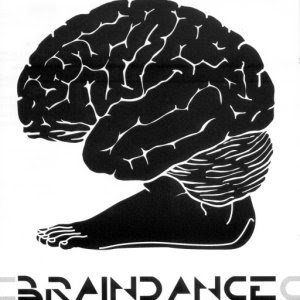On this Tuesday, we explored the Brain Dance and the Five Fundamental Actions. The Brain dance was a quick physical journey through evolution that mirrors the journey each of us passes through developmentally in the first year of life. We explored our pathways and took note of the way in which our bodies are designed along pathways that end in hands, feet, head and tail. In the last portion of class, we broke down the five fundamental actions of yielding, pushing, reaching, grasping and pulling.
Please comment on your experience in this class.
 For a refresher, here's the braindance described from This_Website.
For a refresher, here's the braindance described from This_Website.
Breath: take four to five deep breaths through the nose and out the mouth filling the belly, diaphragm, and lungs.
Corresponds with cellular breathing and the first breath of life.
Tactile: With your hands, squeeze strongly each arm, each leg and the torso, back, and head (whole body). Then tap lightly whole body, then slap sharply whole body and then brush smoothly whole body. Explore a variety of other tactile movements such as scratching, rubbing, soft pinching, tapping, etc.
Corresponds with cellular identity, what is our physical dimension.
Core-Distal: Move from the center out, through and beyond the fingers, toes, head, and tail. Then curl back to torso while engaging core muscles. Movement that grows and shrinks, stretches and curls into big "X"s and little "o"s is great!
Corresponds with radial symmetry and our fetal position in the womb and at birth.
Head-Tail: Move the head and tail (lowest part of spine or coccyx) in different directions and pathways. Play with movement that brings head and tail/pelvis together curving forward and backward and side-to-side. Keeping the knees bent helps to release the pelvis. Wiggle the spine like a snake.
Corresponds with fish and the ability to lift the head.
Upper-Lower: Ground the lower half of body by pressing legs into floor with a slight knee bend. Swing arms in different directions and stretch and dance upper body (arms, head, spine) in different ways. Ground upper half by reaching arms out into space with energy as though you were hugging the earth. Dance with lower half - try marching in place, simple knee bends, jumps, leg brushes, and other actions.
Corresponds with amphibian
Body-Side: Make a big X with your body. Dance with the left side of your body while keeping the right side stabile (still). Then keep the left stabile and dance with the right side. With knees and elbows slightly bent like a "W" bring the left half of the body over to meet the right half and vice versa (like a book opening and closing). Follow your thumb with your eyes as it moves right to left and left to right. Do the lizard crawl with arms and legs open to the sides - reach left arm and knee up then right arm and knee up like a lizard crawling up a wall. Move your eyes right to left and left to right (looking at the thumb near your mouth helps) to develop horizontal eye tracking.
Corresponds with lizard and early crawling
Cross-Lateral: Do a parallel standing crawl with knees and hands in front of you. Let your eyes travel up and down looking at one thumb as it reaches high and low for vertical eye tracking. Do a cross-lateral boogie dance finding as many ways of moving cross-laterally as possible such as touching right knee to left elbow, left hand to right foot, right hand to left knee, left hand to right hip, skipping, walking, crawling, etc.
Corresponds with mammals, monkey and humans walking
Vestibular: This pattern may be done at the beginning of the BrainDance. Choose a movement that takes you off balance and makes you dizzy. Vary the movements you do each week. Swing upper body forward and backward and side-to-side. Make sure head is "upside down." Tip, sway, roll, and rock in different directions (any movement that makes you dizzy). Spin 15 seconds one direction, breathe and rest 15 seconds, then spin 15 seconds the other direction. Take three to four deep breaths to center yourself after spinning!
Corresponds with proprioception and our ability to balance
Five Fundamental Actions
Yielding - getting grounded, connecting to the environment
Pushing - creating boundaries, learning to say no
Reaching - exploring, curiosity, desire
Grasping - making connections with new ideas, object and others
Pulling - bringing new things into ones life















 In this class, we repeated the brain dance and then began our work in the Alexander Technique. We began by doing un-Alexander which was to draw our heads down onto our necks. We explored the concept of the importance of the head and spine relationship by saying our names and making a gesture, circling ankles, wrists, and spines. We noticed what was different when we allowed the head to move forward and up from the spine. What did you notice?
In this class, we repeated the brain dance and then began our work in the Alexander Technique. We began by doing un-Alexander which was to draw our heads down onto our necks. We explored the concept of the importance of the head and spine relationship by saying our names and making a gesture, circling ankles, wrists, and spines. We noticed what was different when we allowed the head to move forward and up from the spine. What did you notice?
 Then we took a walk through the space with our newly experienced head /spine connection. For homework, you were given the image of a conehead. How does your head feel differently with a conehead? What else did you experience in this introduction to Alexander?
Then we took a walk through the space with our newly experienced head /spine connection. For homework, you were given the image of a conehead. How does your head feel differently with a conehead? What else did you experience in this introduction to Alexander?
